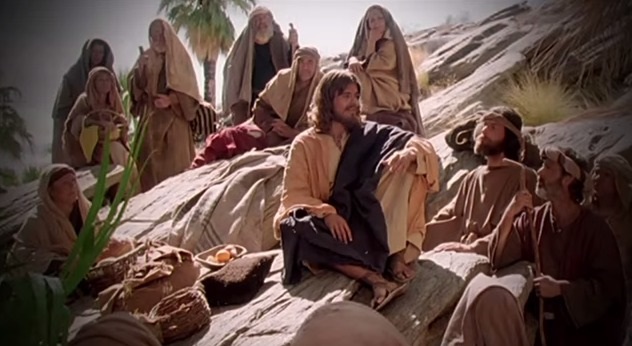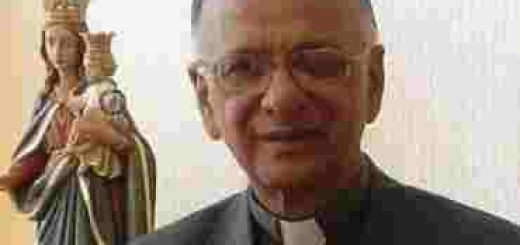Christianity: An Alternate Perspective – Varghese Pamplanil

 (Note: Articles of Shri Varghese Pamplany are special for me. He always unfolds history at the background of ‘what actually happened’. This short piece of observation is enough to show us what Jesus was and how away we are from Him now. He suggests that if there was a known entity status beyond the realm of nothingness, the present Church would have attributed that too, to Jesus the Teacher. In a Church, where the marginalized is still marginalized and the creamy continues to be creamy, I think that we need more eye-openers like Shri Varghese, to whom sharing the truth is never a challenge but a way of life. Joseph Mattappally – Asso. Editor CCV)
(Note: Articles of Shri Varghese Pamplany are special for me. He always unfolds history at the background of ‘what actually happened’. This short piece of observation is enough to show us what Jesus was and how away we are from Him now. He suggests that if there was a known entity status beyond the realm of nothingness, the present Church would have attributed that too, to Jesus the Teacher. In a Church, where the marginalized is still marginalized and the creamy continues to be creamy, I think that we need more eye-openers like Shri Varghese, to whom sharing the truth is never a challenge but a way of life. Joseph Mattappally – Asso. Editor CCV)
Part I.
 The Christian religion did not evolve seamlessly as claimed by its votaries. The strategic ordering of the Church documents, with the ‘later‘ Gospels and Acts coming before ‘earlier’ letters of Paul was deliberately done. It cradles Paul within the ambit of Jesus’ message and the early Church expansion. It is a clever and brilliant ploy that dovetails the Act’s account of how early Christianity developed. The sequence of the New Testament documents and the alleged history presented in the Acts conspire to give an impression that Christianity was transmitted evenly from Jesus to Paul. But history didn’t unfold this way.
The Christian religion did not evolve seamlessly as claimed by its votaries. The strategic ordering of the Church documents, with the ‘later‘ Gospels and Acts coming before ‘earlier’ letters of Paul was deliberately done. It cradles Paul within the ambit of Jesus’ message and the early Church expansion. It is a clever and brilliant ploy that dovetails the Act’s account of how early Christianity developed. The sequence of the New Testament documents and the alleged history presented in the Acts conspire to give an impression that Christianity was transmitted evenly from Jesus to Paul. But history didn’t unfold this way.
The Galilean known as Jesus, did not establish any Church. His aim all along had been to liberate his people from the twin yokes of the Empire and the lackey priesthood of Judaism consisting of Sadducees and Pharisees. He announced the Kingdom of God as a radical alternative to the Imperial Rome’s domineering hegemony. The Kingdom of God envisaged by Him was never meant to be any structural church with a hierarchical leadership, sacred texts, high rise churches and cathedrals and vast abbeys to create sense of smallness in the psyche of humans and least of all RITUALS. The claim that Jesus came to build pyramidical Church sounds questionable. Jesus who heaped scorn and ridicule on the Jewish priesthood would not have even dreamed of a monarchical Church with an Emperor Pope ruling with the dubious claim of Divine Right with his princely deputies of bishops to lord over the proletariats. The manipulations made in the Bible surreptitiously over the years and the hotchpotch creeds cobbled up later, hide the real human Jesus.
The Kingdom of God envisaged by Jesus is a just society, where human values are of paramount importance; where deeds of compassion and caring, backed by an inner spirit of generosity and forgiveness is the sine qua non. In this regime, people are sensitive to the needs of others and respond appropriately. Here right action arises out of right attitudes for the benefit of the human kind. The mandate now prevailing in the Church centres on “correct belief" in the person of a deified Christ. There is not even the barest and minimal linkage between the Galilean Jesus and the Christ of Faith. The historical Jesus who walked on the rough terrain of Galilee dispensing love and compassion to the downtrodden and the marginalised around the 30s of the Common Era has been striped off his humanity. Jesus is now projected as a supernatural being engaged in a rescue mission; someone who has swooped down from the Heavens to take loyal followers with him back there.
By the time the contours of Pauline-Constantanity has crystallised into the present form, Jesus and his message has been overtaken by a cult of personality. This metamorphosis of haloing Jesus drowns out the vibrancy of his being, in as much as we have trouble in seeing him as human, and even to identify his message. The human Teacher and Messiah has been elevated initially to a Christ and then to God. All this happened just within a period of three centuries of his death.
Now his message is irrelevant; his images and statues are peddled for hard cash, a very lucrative business, of course. Instead of affirmative action to ameliorate the human condition, money spinning shaman-ism without accountability and reciprocity has become the order of the day.
After the death of Jesus by crucifixion, his followers under the leadership of James, his brother, along with Peter and John, remained in Jerusalem, as a dissident wing of Judaism, to keep his memory alive and waiting for the Kingdom of God to usher in. They steadfastly adhered to the laws of the Jews, including circumcision and dietary restrictions. To this group, later known as Ebionites (the poor) Jesus was a TEACHER and not any GOD INCARNATE, who rose from the dead in three days. To them he was a great being, nonetheless human, some one who appears among the people very rarely.
In the 40s of CE, Paul of Tarsus, a Roman Citizen and a diaspora Jew, more attuned to Hellenistic culture than the Jewish milieu, rebelled against Judaism and started a new religion based on his alleged encounter with a Resurrected Christ. This outfit is later came to be known as Christianity. The irony is, Paul never met Jesus in person, nor did he ever take cognisance of Jesus’ message or his outlook or mission.
Paul postulated the idea that Christ, God’s only Son, linked to God the Father Almighty, came down from Heaven to Earth to redeem the human kind from the Sin of Adam, by his sacrificial death. According to Paul, salvation and eternal life is assured by Faith and Faith Alone in Christ and the Grace emanating therefrom. He unilaterally called himself a Apostle of Christ. While the Jesus movement was particular that it was meant only for circumcised Jews, he recruited ‘God fearers’ found in Hellenistic synagogues and Gentiles. He repudiated Jewish Law (Torah) and the Jewish way of life. He urged his followers to undergo his kind of mystical experience of the “Resurrected Christ”
Much of Paul’s views were paralleled to Roman mystery religions. Paul’s Christian religion was moulded similar to the other mystery religions of the day; the cults of Mithras, Isis or Dionysus which portray a dying-rising Saviour God human, who comes down from Heavens to rescue humanity from its dire plight. In Paul’s Eucharist, the bread becomes the body of Jesus and the cup represents a new covenant; those who eat the flesh and drink the blood of the Saviour God have eternal life. It is only in this context that the participation in the consumption of the body and the blood of the divine-human Jesus Christ makes sense. The idea of divine communion through the eating of the God is a rite that it is found in the Egyptian Book of the Dead. Such a “holy communion” was practiced in the Mysteries as means of becoming one with Osiris, Mithras or Dionysus.
Paul’s ritual shifts the focus away from Jesus the Messiah to Christ the God. “The Eucharist signifies the mystical incorporation of the initiate into the God-head by eating the body and drinking the blood of Christ. Such a ceremony implies the deification of Jesus which is quite impossible to reconcile with the view of Jesus as a Messiah in the Jewish sense”. The implication of such a Eucharist that salvation is to be obtained through Jesus’ death and the shedding of his blood is the revival of the pagan concept of atonement. Jesus, a practicing Jew, would never have instituted a ceremony involving eating of human flesh and drinking human blood. Blood is taboo to the Jews.
(To continue)
















